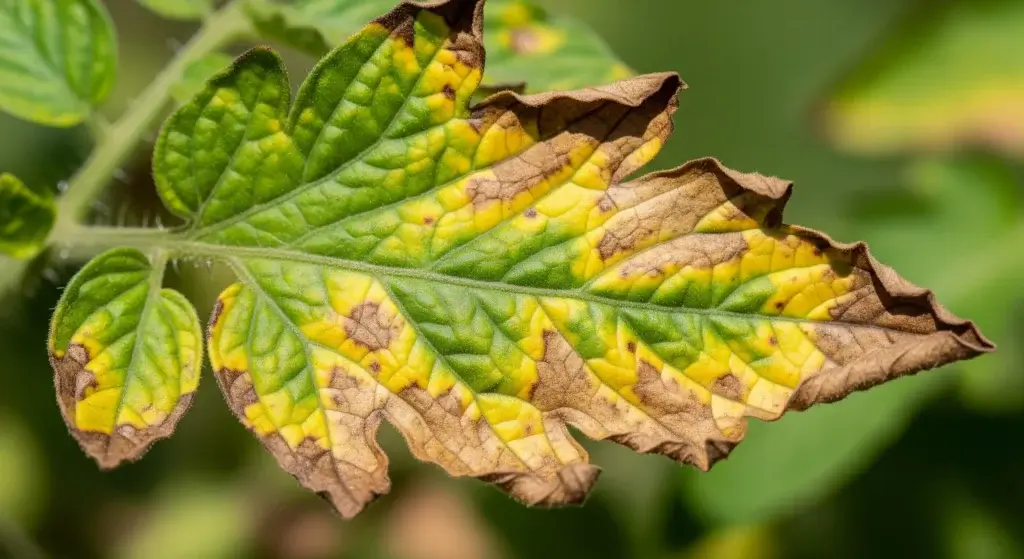
The snake plant, renowned for its robust nature, is typically a symbol of hardiness.
However, the moment you observe it drooping, it raises a red flag.
In this comprehensive guide, we aim to demystify the reasons behind your snake plant’s drooping appearance, delve into potential causes, and offer actionable solutions to restore its once-upright stature.
What are the Causes of Snake Plant Drooping?
Overwatering
As caretakers of the resilient snake plant, it’s easy to shower it with too much love in the form of water.
However, this excess of affection can prove detrimental.
Overwatering is a common culprit behind the drooping of snake plants, leading to the insidious development of root rot.
Signs of overwatering include yellowing leaves, a soggy soil texture, and, of course, the unmistakable droop.
To avoid this, it’s crucial to establish a balanced watering routine.
Underwatering
On the flip side of the watering spectrum lies the issue of underwatering.
Neglecting your snake plant’s hydration needs can also result in a sad, drooping demeanor.
It’s imperative to strike a balance, providing adequate moisture without drowning the plant.
Signs of underwatering include dry and crispy leaves, accompanied by, you guessed it, drooping.
To combat this, develop a consistent watering schedule, ensuring the soil is sufficiently moist but not waterlogged.

Poor drainage
Snake plants, being resilient by nature, detest standing in waterlogged soil.
Poor drainage is a potential menace, causing excess water to accumulate and wreak havoc on the plant’s roots.
The result?
You guessed it – drooping.
To thwart this issue, opt for pots with drainage holes, allowing excess water to escape and preventing it from stagnating around the roots.
Additionally, consider using a well-draining potting mix to further enhance the drainage capabilities of your snake plant’s habitat.
Root bound
As the robust snake plant flourishes, it may encounter the challenge of becoming root-bound.
This phenomenon occurs when the plant’s roots outgrow their container, leading to a scarcity of essential nutrients and water.
The consequence?
The telltale sign of drooping.
To address this concern, it’s crucial to understand how to recognize root-bound conditions and implement measures to promote healthy root growth.
Inadequate light
While snake plants are lauded for their adaptability, insufficient light can cast a shadow on their overall health, potentially causing drooping.
Exploring the ideal light conditions for snake plants is vital.
These resilient green companions thrive in indirect sunlight but can tolerate low-light conditions.
If your snake plant resides in a dimly lit corner, consider moving it to a brighter spot.
Temperature stress
Snake plants, although hardy, can succumb to temperature stress when faced with extremes—be it scorching heat or chilly cold. Such stressors can manifest as the dreaded droop.
To shield your snake plant, it’s crucial to maintain a comfortable temperature range.
Protect it from drafty windows, especially during winter, and avoid placing it near heaters or air conditioning vents.
How to Fix Snake Plant Drooping

Assess watering habits
Begin your journey to revive your snake plant by reflecting on your watering habits.
A balanced routine is key—allow the soil to dry out between watering sessions to prevent the perils of both overwatering and underwatering.
Customize your watering schedule based on the unique needs of your plant, ensuring it thrives in optimal moisture conditions.
Check soil drainage
Conduct a thorough examination of your snake plant’s soil drainage.
If the current soil tends to retain excess water, it might be time for a repotting adventure.
Explore the world of well-draining soil mixes, and we’ll guide you through the step-by-step process of repotting to enhance the drainage capabilities of your plant’s home.
Examine the roots
Delve into the hidden world beneath the soil by examining your snake plant’s roots.
Look out for signs of rot or overcrowding. If you spot any damaged or mushy roots, fearless trimming is in order.
For those suffering from a case of root-bound congestion, we’ll provide you with a detailed roadmap for root maintenance, ensuring your plant’s roots have ample space to flourish.
Assess lighting conditions
Assess the lighting conditions in the current habitat of your snake plant.
If it’s yearning for more light, consider a strategic relocation to a brighter spot or supplementing its light intake with artificial assistance.
We’ll delve into the ideal lighting requirements, guiding you to create an environment where your snake plant can bask in the perfect balance of sunlight.

Temperature control
Shield your snake plant from the harsh extremes of temperature.
Drafty windows, overzealous heaters, and air conditioning units can all be potential stressors.
Find a sweet spot—a consistent temperature range that aligns with your plant’s preferences.
We’ll walk you through the steps to create a cozy haven for your snake plant, ensuring it thrives in its comfort zone.
Conclusion
The journey towards a revitalized snake plant is a continuous exploration.
Regular observations, adjustments and a nurturing spirit will be your allies in maintaining the vibrancy you’ve rekindled.
Embrace the evolving relationship with your snake plant as it thrives under your thoughtful guardianship.
The revival of your snake plant is not just a triumph over drooping leaves; it’s a triumph of care, knowledge, and the enduring resilience of nature.
As you witness your once-drooping companion stand tall, take pride in the role you’ve played in this botanical renaissance—an ongoing narrative of growth, renewal, and the timeless dance between caregiver and plant.
FAQs
Yes, overwatering can lead to root rot, impacting the plant’s ability to stand upright. Proper watering is crucial for a healthy snake plant.
Check the roots. If they are circling the pot or poking out from the drainage holes, your snake plant may be root-bound and in need of repotting.
Absolutely. While snake plants tolerate low light, they still need sufficient sunlight. Ensure your plant gets the right amount of light to thrive.
We’ll provide a step-by-step guide on how to repot your snake plant, ensuring a smooth transition and optimal growth.



